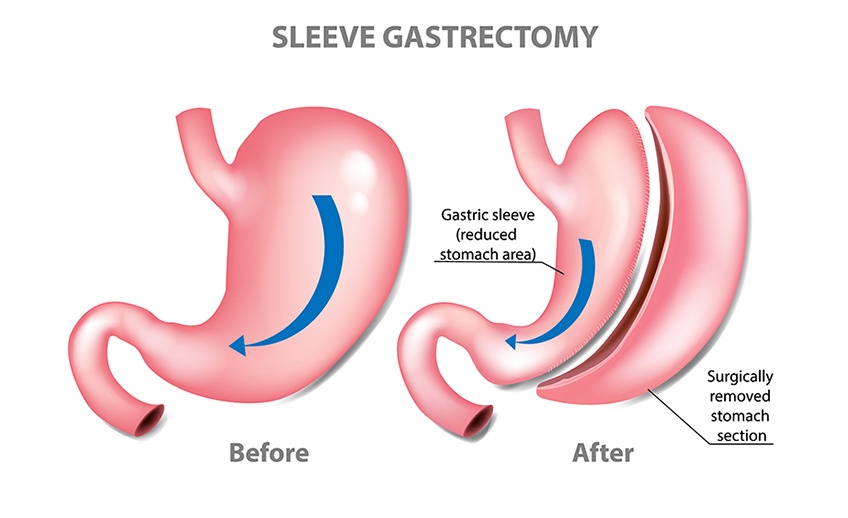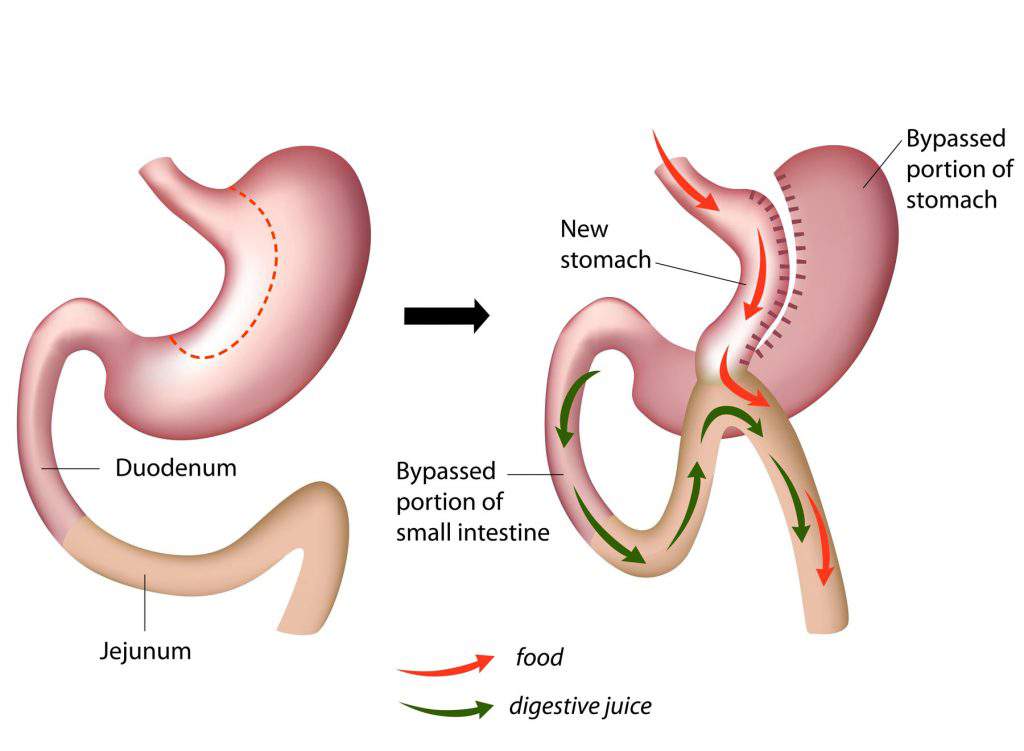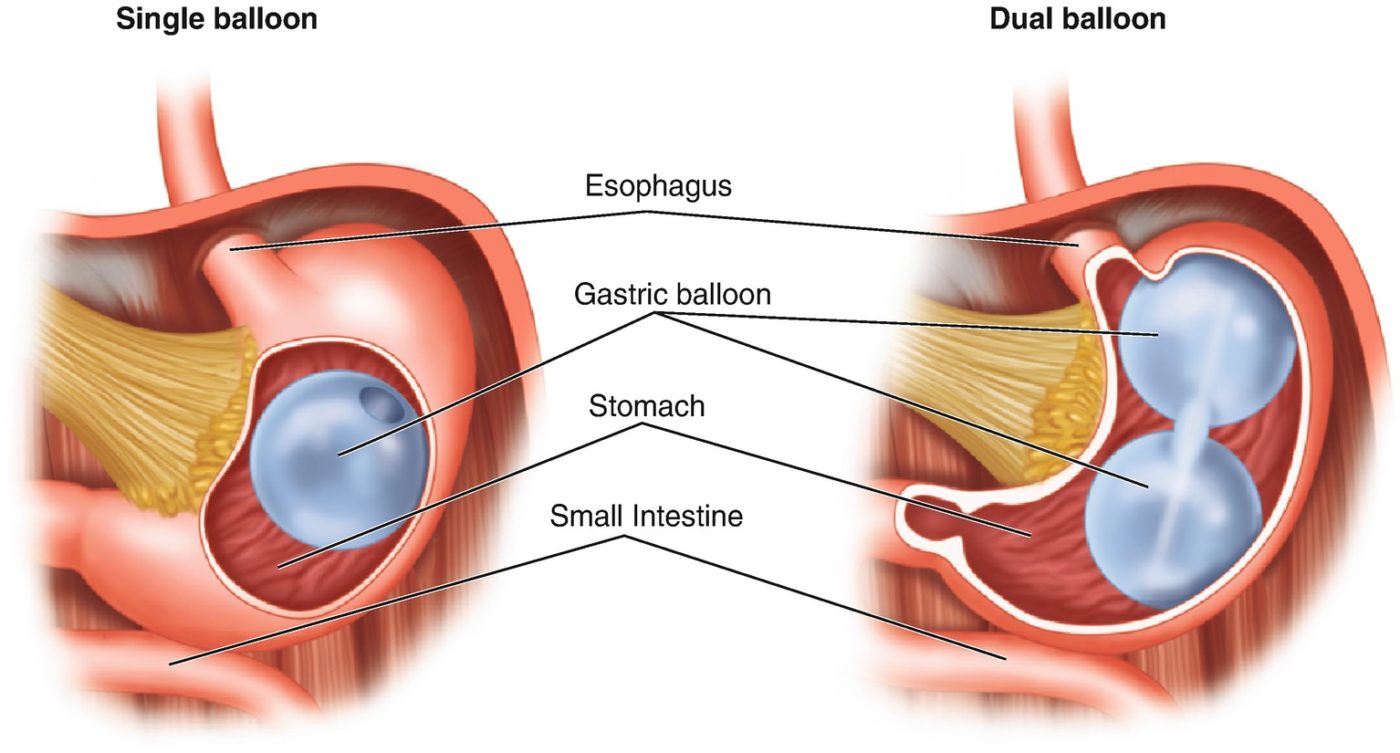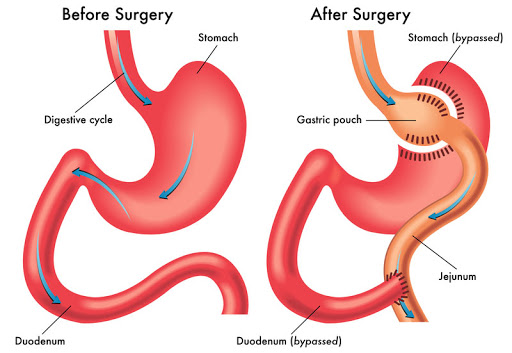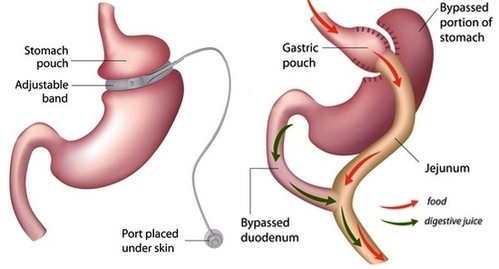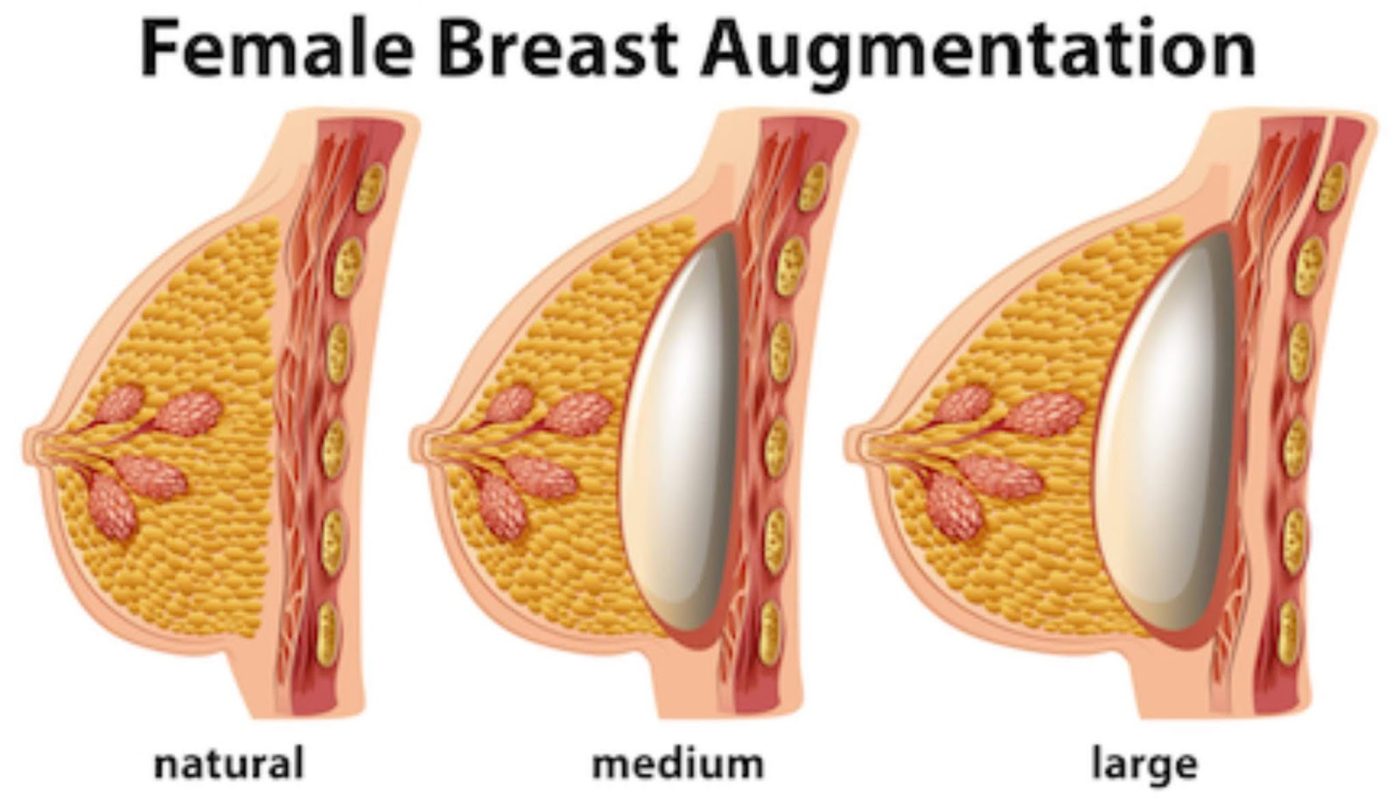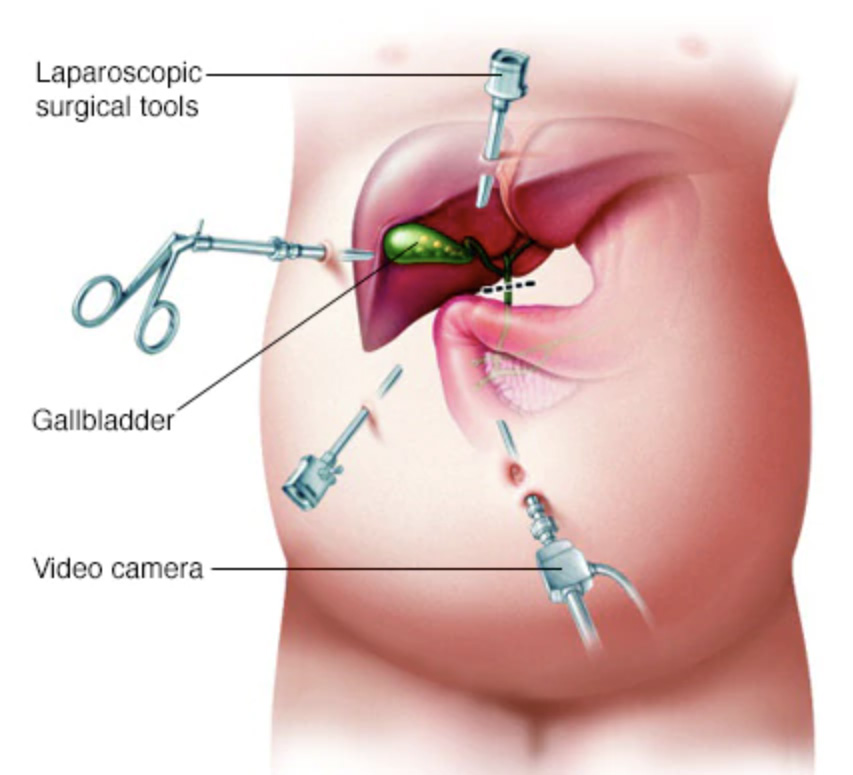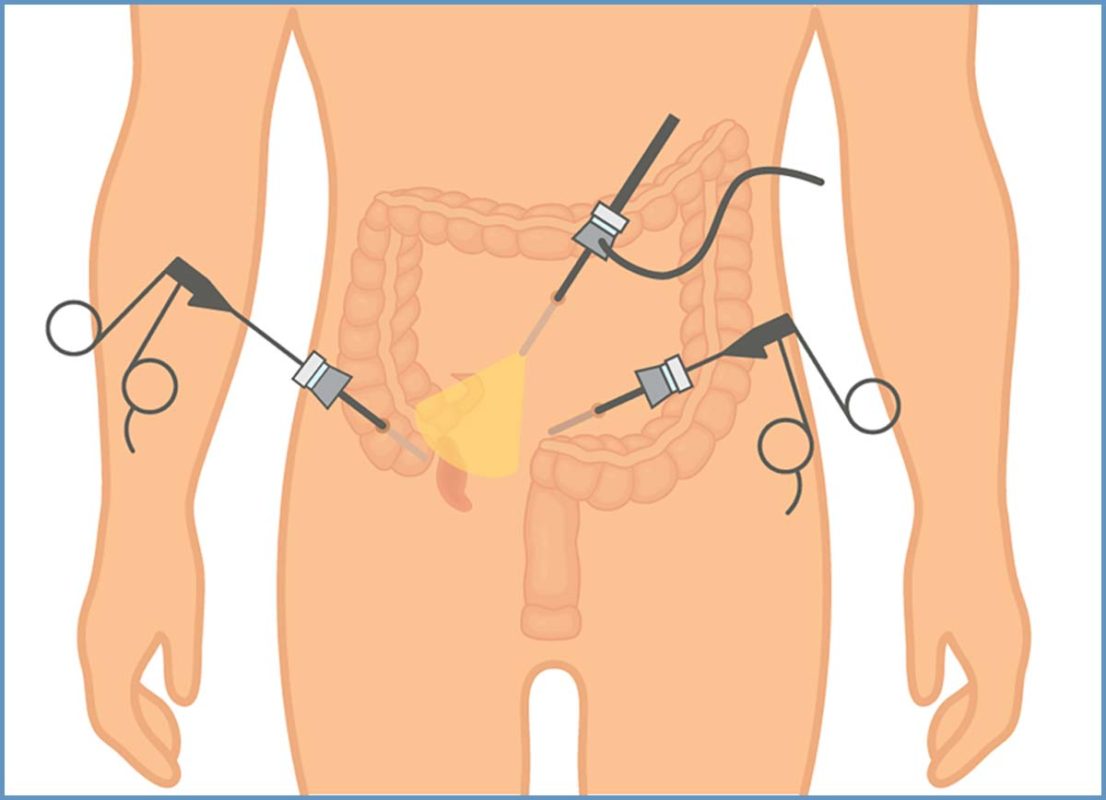Sleeve Gastrectomy
Sleeve gastrectomy, also called a vertical sleeve gastrectomy, is a surgical weight-loss procedure. This procedure is typically performed laparoscopically, which involves inserting small instruments through multiple small incisions in the upper abdomen. During sleeve gastrectomy, about 80 percent of the stomach is removed, leaving a tube-shaped stomach about the size and shape of a banana.
Gastric mini bypass
A mini gastric bypass surgery functions just like a traditional gastric bypass surgery but that the stomach is divided into upper and lower pouches and the small intestine is rerouted. This allows for both restrictive and malabsorption weight loss.
Gastric Balloon
A gastric balloon, also known as stomach balloon, is an inflatable medical device that is temporarily placed into the stomach to reduce weight. It is marketed to provide weight loss when diet and exercise have failed and surgery is not wanted or not recommended.
SASI
A Promising operation for obese and diabetic patients. SASI (single anastomosis sleeve ileal bypass). A mix operation between gastric sleeves and gastric bypass surgeries.
Roux en y bypass
Roux-en-Y gastric bypass (RYGB) is a type of weight-loss surgery. Weight-loss surgery is also called bariatric surgery. It’s often done as a laparoscopic surgery, with small incisions in the abdomen. This surgery reduces the size of your upper stomach to a small pouch about the size of an egg.
Banded Sleeve Gastrectomy
Banded sleeve gastrectomy has better weight loss at four years compared to LSG. There is growing evidence that banded bypass – placing a ring at the gastric pouch during a gastric bypass to prevent gastric dilatation – can prevent weight regain and eventually improve the weight loss maintenance
Redo surgeries
It’s a procedure done to patients with previous failed bariatric surgeries as sleeve or VBG. Failed to lose enough weight or gained too much weight after losing weight. Modifications are done to the previous surgery to achieve ideal weight
Vaser liposuction
VASER stands for ‘Vibration Amplification of Sound Energy at Resonance’. It is a liposuction technique that uses ultrasound waves to break up and liquefy fat cells, making them easier to extract.
Skin tightening with J-Plasma
Renuvion is a non-surgical procedure for skin tightening. Also known as J Plasma or J Plasty, the procedure tightens and refreshes loose skin without the need for invasive surgery, extended downtime, or large surgical scars.
Breast augmentation
Breast augmentation — also known as augmentation mammoplasty — is surgery to increase breast size. It involves placing breast implants under breast tissue or chest muscles. For some women, breast augmentation is a way to feel more confident.
Breast reduction
Breast reduction surgery, also known as reduction mammoplasty, is a procedure used to remove excess fat, tissue and skin from the breasts. If you have large breasts, you might choose to have breast reduction surgery to ease discomfort or to achieve a breast size proportionate to your body.
Dermolipectomy
Dermolipectomy and abdominal plastic surgery (tummy tuck and waist tuck) … The procedure includes the removal of the excess skin and fat tissue from the abdomen. The incision line is placed low in so called „bikini line“, horizontally in the lower abdomen above the pubic region, and deep up to the abdominal wall muscles.
Fat injection
A fat grafting procedure, or fat injection, transfers fat from areas in which you have excess fat, such as the outer thighs, and injects it into areas that may be lacking in volume, such as your face, hands, breasts or buttocks. This safe, long-lasting, well-tolerated procedure produces natural-looking results.
Laparoscopic cholecystectomy
A laparoscopic cholecystectomy is a surgery during which the doctor removes your gallbladder. This procedure uses several small cuts instead of one large one. A laparoscope, a narrow tube with a camera, is inserted through one incision. This allows your doctor to see your gallbladder on a screen.
Laparoscopic appendectomy
is a minimally invasive surgery to remove the appendix through several small incisions, rather than through one large one. Recovery time from the lap appendectomy is short.


